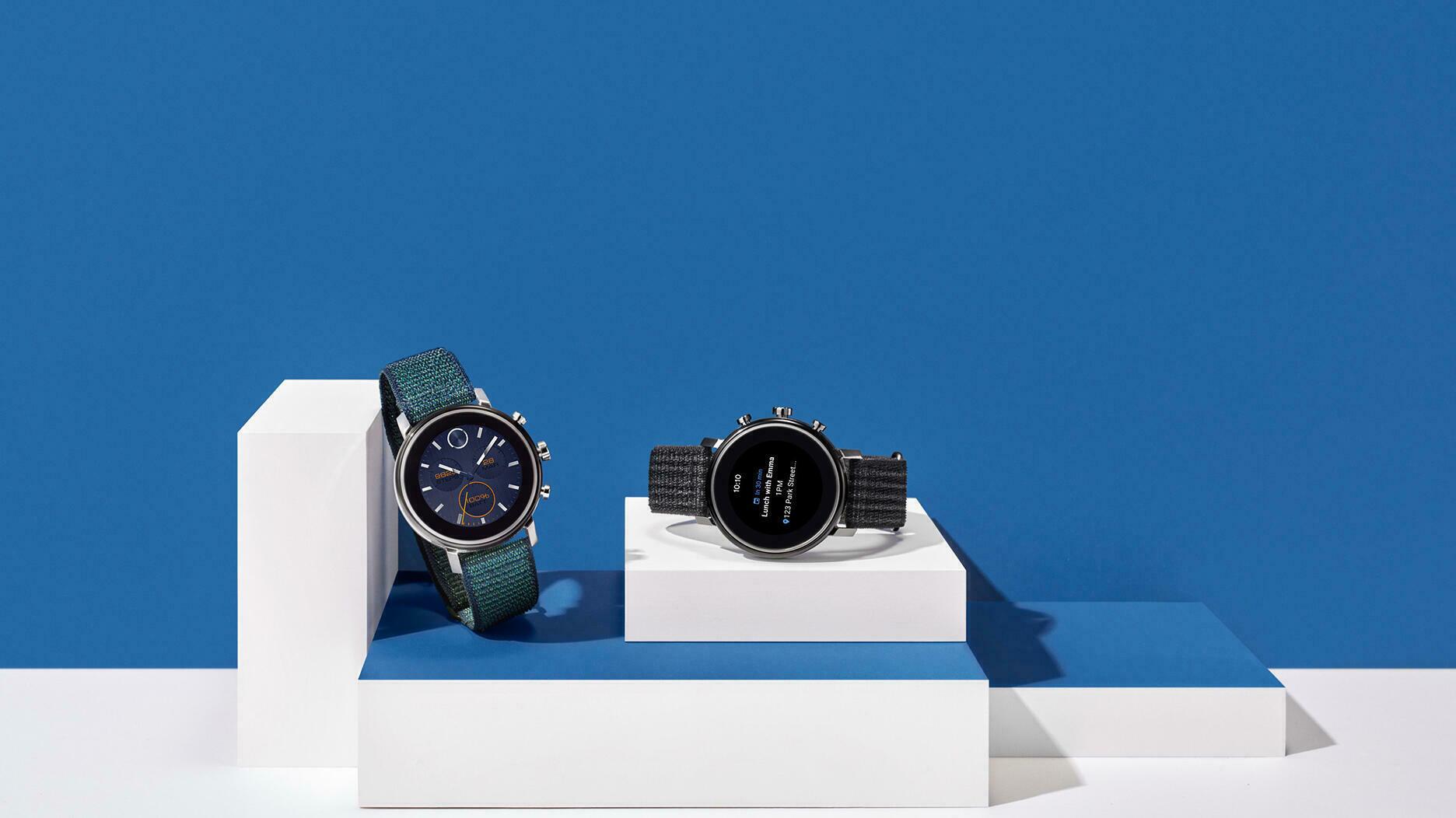LVMH Talks Tiffany Flagship Reopening, Makes Another Acquisition
Alongside its first-quarter results, LVMH announced it has scooped up a prominent French jewelry manufacturer primarily for Tiffany & Co.

The luxury conglomerate posted double-digit quarterly revenue growth, both overall and in its watches and jewelry division
“The watches and jewelry business continues to perform well with particular strength in Tiffany and Bulgari, reflecting a great deal of excitement and energy in both maisons,” said Christopher Hollis, LVMH’s director of financial communications, on an earnings call Wednesday afternoon.
From Tiffany & Co.’s flagship reopening to the impact of the “quiet luxury” trend, these are six important takeaways from the company’s most recent earnings report.
LVMH’s latest acquisition will boost Tiffany & Co.’s manufacturing capacity.
LVMH announced Thursday, the day after it released its Q1 results, that it has acquired a majority stake in Platinum Invest Group as it looks to bolster Tiffany & Co.’s manufacturing and production capacity.
The acquisition includes Orest and Abysse, leading jewelry producers based in France.
Platinum Invest operates five workshops in the Grand Est region, employing nearly 800 people.
The workshops will continue to work for existing clients, including other LVMH jewelry houses.
“This acquisition is an important step for our house; it will allow us to reinforce our commitment to the highest level of quality, while expanding our production capacity to meet the growing demand of our clients,” said Anthony Ledru, president and CEO of Tiffany & Co.
“We are certain this acquisition will enable us to pursue our momentum and our ambitions for excellence in the global fine and high jewelry market.”
The acquisition price was not disclosed, but the deal is set to finalize this summer.
It was a strong first quarter for most divisions, including watches and jewelry.
LVMH had a strong first quarter, with revenue up 17 percent year-over-year to €21.04 billion ($23.13 billion).
Revenue in the jewelry and watch category climbed 11 percent in the first quarter to €2.59 billion ($2.85 billion).
LVMH’s jewelry portfolio includes Bulgari, Chaumet, Repossi, and Fred, as well as Tiffany & Co.
Bulgari saw strong momentum in the first quarter, said LVMH, particularly its iconic “Serpenti” line as it celebrates its 75th anniversary. The milestone was celebrated with an exhibition, titled “Serpenti: 75 Years of Infinite Tales,” at the Museum of Contemporary Art in Shanghai.
Its high jewelry collection, “Eden: The Garden of Wonders,” also found success.
Chaumet created the Echo Culture Awards, which honors women-led cultural projects.
Fred has expanded its “Pretty Woman” line, introducing new reversible bracelets, featuring its signature “heart within a heart” design in carnelian.
As for watches, TAG Heuer is celebrating the 60th anniversary of its Carrera chronograph, recently debuting two new models at Watches & Wonders in Geneva.
Zenith also released its redesigned Pilot collection at the watch trade show.
Hublot marked its fourth collaboration with Japanese artist Takashi Murakami, creating 12 unique timepieces exclusive to owners of a specific NFT.
“Jewelry is doing a bit better than watches,” said CFO Jean-Jacques Guiony on the call. “Reading the watch market is not as easy as reading the jewelry market. Jewelry is retail, so we know almost live what’s going on.”
Most of LVMH’s business groups, including perfume and cosmetics, and fashion and leather goods, saw strong double-digit organic growth in the quarter.
The exception to the rule was its wines and spirits segment, which was up single digits, weighed down by lagging U.S. sales, a decline in demand for its cognac brands, and a high inventory level, said LVMH.
Improved sales at its duty-free stores signal international travel has continued to recover.
Tiffany & Co. remains a shining star on its balance sheet.
Tiffany & Co. had a “good start” to the year, said LVMH.
The new Lock bracelet collection, which made its debut in North America last year, has begun its international rollout.
The “Tiffany T” line saw “great success,” while its high jewelry put on a record performance.
As for its store fleet, the brand is continuing to roll out new concept stores.
Its landmark flagship on New York’s Fifth Avenue is set to reopen in late April after undergoing years of renovations, which were delayed due to the COVID-19 pandemic.
Guiony estimated, based on previous management’s numbers, that the store brought in close to $400 million per year, around 10 percent of overall sales, when it was open.
“I don’t think we’ll increase the business by 10 percent just by clicking our fingers and reopening the store on Fifth Avenue, but it should have a positive impact, not only in terms of numbers, but the store will be absolutely stunning and will add to the business,” he said.
“It’s also very important in terms of marketing and branding because it’s a testimony to what we’re doing with the brand. It’s probably the most emblematic luxury store in the world,” he added. “We did things according to the status of the store. Hopefully, you will be stunned, as we are.”
The brand’s recognition also has been propelled forward by a number of high-profile celebrities appearing in its campaigns or serving as brand ambassadors, including Beyoncé, K-pop star Rosé, Gal Gadot, and Hailey Bieber.
LVMH is ready for the “quiet luxury” trend.
The “quiet luxury” trend, which refers to the rising popularity of high-end-yet-understated style. It’s reminiscent of the phrase, “money talks, wealth whispers,” and an echo of what was seen across the luxury market during the Great Recession.
“It’s a new name for something we’ve heard already,” said Guiony, while also noting how cyclical fashion can be, such as how handbags with logos fell out of fashion around 15 years ago, only to remerge later. “It comes and goes.”
For shoppers looking for quiet luxury items, LVMH has them covered, he said.
“We try to accommodate the taste of all of our customers,” he said. “If customers want unsigned products, they should get them.”
However, he noted, a “vast majority” of LVMH’s customers have historically opted for signed, logo-prominent goods.
“We don’t know whether this will be a trend or not in the coming quarters, but, in any event, we are ready to offer clients products that will suit their needs.”
The U.S. market is seeing steady growth, said LVMH.
In the first quarter, U.S. revenue was up 8 percent year-over-year organically.
The United States remains LVMH’s second largest market in terms of revenue, just behind Asia. It accounted for 23 percent of total revenue in the quarter, down from 24 percent in the previous first quarter.
Guiony noted the U.S. market is performing better than some analysts had anticipated.
“Everybody was expecting 2023 to be a horrendous year for luxury in the U.S. It didn’t happen,” he said. “It’s not as good as it used to be, but how could it stay at that 20 percent growth per annum? It’s normalizing, but it’s very difficult to make any predictions.”
He noted that rising interest rates likely are taking a toll on consumer spending in the U.S.
As for the other regions, revenue in Europe “normalized,” said LVMH, up 24 percent year-over-year.
Momentum in Japan was strong, up 34 percent year-over-year.
The Asia market, excluding Japan, has been rebounding as the impact of COVID-19 pandemic restrictions eases. Regional revenue in the quarter was up 14 percent.
LVMH doesn’t foresee raising prices across the board again this fiscal year.
In February, which falls into LVMH’s previous fiscal year, the company announced it would be raising prices globally on goods from its Louis Vuitton brand.
Prices increased as much as 20 percent in China, which the company attributed to the rising manufacturing and transportation costs.
“We think we did what we had to do last year to reflect inflationary pressures,” said Guiony, but said most of its product lines would be more cautious this year in regard to price increases.
While he noted there may be some prices increases here and there, they would be tactical rather than global, he said.
Looking to the rest of the fiscal year, LVMH didn’t provide financial guidance, but remains cautiously optimistic.
“In an uncertain geopolitical and economic context, LVMH remains both vigilant and confident at the start of the year,” said the company.
“The group will continue to pursue its strategy focused on the development of its brands, driven by a sustained policy of innovation and investment as well as by a constant quest for quality in its products, their desirability and their distribution.”
LVMH will hold its annual general meeting on April 20.
The Latest

The couple pleaded guilty to concealing at least $127 million in cash transactions at its precious metals businesses.

Consumers shared concerns about prices, inflation, tariffs, trade, and politics in the survey’s write-in response section.

In February 2026, the auction house will move its headquarters to the former Steinway Hall, a neoclassical landmark on Billionaires’ Row.

How Jewelers of America’s 20 Under 40 are leading to ensure a brighter future for the jewelry industry.

The new show will take place Jan. 23-25, 2026.


The former BHP Billiton leader and Gemfields chairman is remembered for his influential leadership throughout his 50-year mining career.

The LVMH-owned brand has partnered with the costume design union to revamp its award for 2026.

Roseco’s 704-page catalog showcases new lab-grown diamonds, findings, tools & more—available in print or interactive digital editions.

The luxury titan inked a deal to acquire an initial minority stake in the jewelry manufacturer with a pathway to full ownership by 2032.

The company’s curation of unsigned vintage and estate jewelry debuted at the Bloomingdale’s in Costa Mesa, California.

In the recent multi-shipment seizure, CBP also found counterfeit Audemars Piguet, Moncler, and Chrome Hearts items.

Helzberg’s Chief Retail Officer Mitch Maggart shared details about its tests of a new store concept rooted in an elevated luxury experience.

Jewelers of America execs and National Jeweler editors discuss tariffs, the sky-high gold price, and the engagement that broke the internet.

The luxury goods company said founder Ippolita Rostagno will remain at the brand’s helm.

Laura Burdese, who joined the Italian luxury brand in 2022, will take on the role in July.

The National Jeweler editors revisit the most noteworthy industry happenings and design trends from 2025.

Need a gift for the cat lover who has everything? Look no further than our latest Piece of the Week.

It purchased the “Grosse Pièce,” an ultra-complicated Audemars Piguet pocket watch from the ‘20s, for a record-breaking price at Sotheby’s.

The lab-grown diamond grower now offers custom engagement and fashion jewelry through its Kira Custom Lab Jewelry service.

Chandler got his start at Michelson Jewelers and has served as DCA president and CEO since 2001. He will retire at the end of the month.

The boutique is slated to open this week inside Terminal 8, offering pre-owned Rolex watches and more to international travelers.

Sponsored by Digital Monitoring Products

The special-edition egg pendant ingested in a New Zealand jewelry store was recovered after a six-day wait.

Associate Editor Natalie Francisco plays favorites with Piece of the Week, selecting a standout piece of jewelry from each month of 2025.

The “Love and Desire” campaign is inspired by the magic that follows when one’s heart leads the way, said the brand.

Two awardees will receive free tuition for an educational course at the Swiss lab, with flights and lodging included.

Berta de Pablos-Barbier will replace Alexander Lacik at the start of January, two months earlier than expected.




























